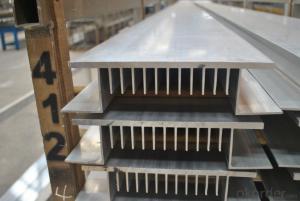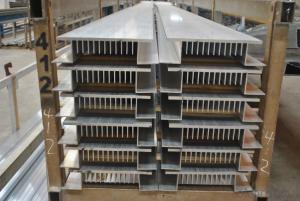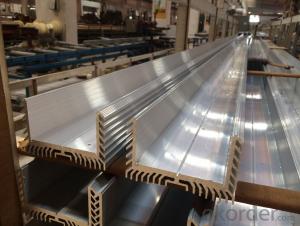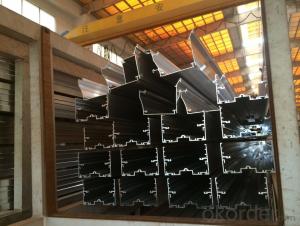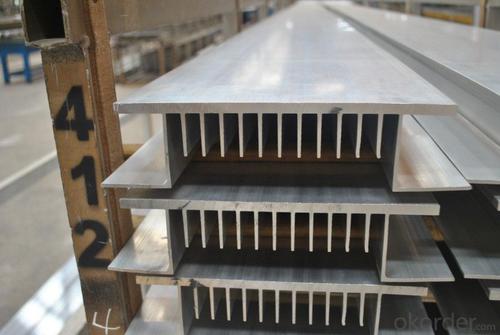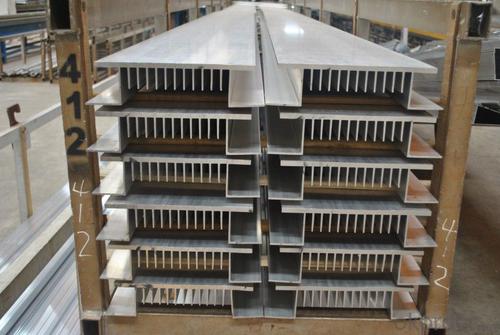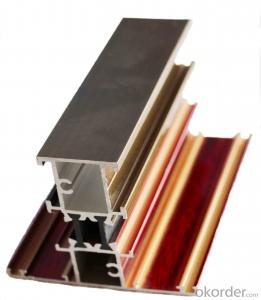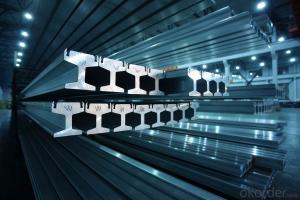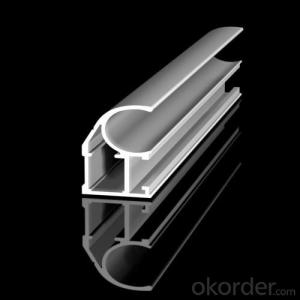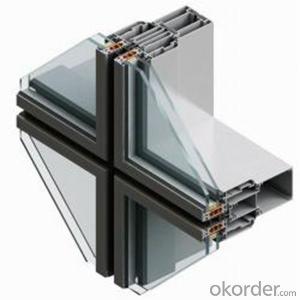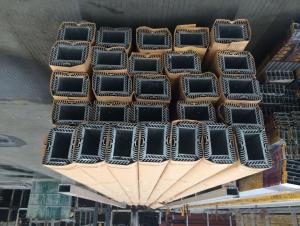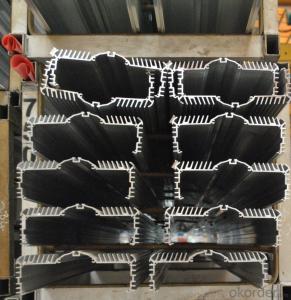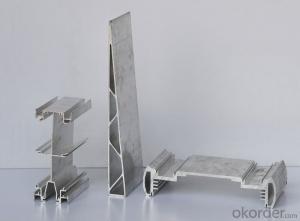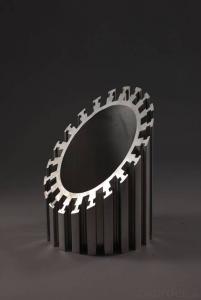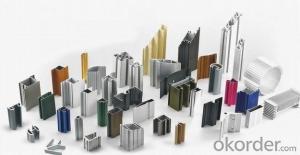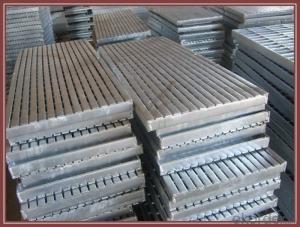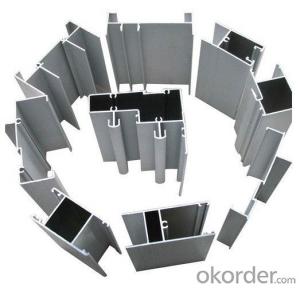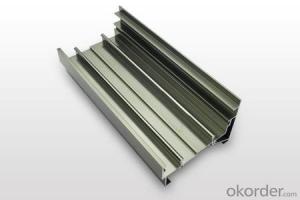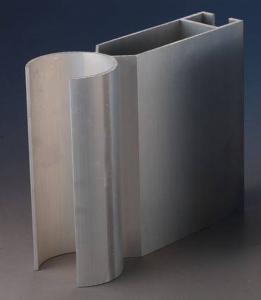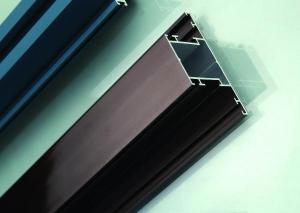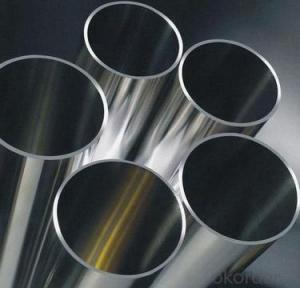Wholesale Standard Aluminum Profiles for Industrial Aluminium Heating Radiators
- Loading Port:
- Shanghai
- Payment Terms:
- TT OR LC
- Min Order Qty:
- 1 m.t.
- Supply Capability:
- 1000 m.t./month
OKorder Service Pledge
OKorder Financial Service
You Might Also Like
Aluminium profile requirement
Item | Original Product | Alternatives |
Shape | Irregular | Round,Square,Triangle,Rectangle etc...and Customized shapes are welcome. |
Alloy | 6061 alloy | 6063,6061,6082,6060,6005,6N01,5083,5056,3003,7005,7020 Alloy etc. |
Temper | 6063 | T3,T4,T5,T6,T8 can be discussed. |
Finishing | T5 | Mill finished, Anodized, Electrophoresis, Powder coated, Painted, Sliver matt, Sand blasted, PVDF, Silkscreened etc. |
Aluminium Radiator requirement:
Item | Original Product | Alternatives |
Standard for Extrusion | GB /T5237-2000 | EN-755-2/3/6/8, BS-1474, BS 1161 |
Standard for Fabrication | GB/T1804-92 | BS 8118 |
Standard for Anodizing | GB5237.2-2004 | BS1615:1987 |
Standard for Hard Anodizing | Not required | BS5599:1993 |
Standard for Powder coating | Not required | GB5237.4-2004 |
Working/Service procedure | Die designing→Die making→Smelting&alloying→Extruding→Cutting→CNC machining→Driling→Tapping→Surface treatment→Welding→Assembling→Packing→Shipping→After Sale Service | |
Quality oriented | ISO 9001:2008 TS16949:2002 | |
Documents | Mill Certificates, RoHS, REACH(SVHC), Working Instructions, Inspection Instructions, Packing Instruction, PPAP(including Control Plan, PFMEA etc.), Unpacking/unloading Instructions for customers. | |
Packing Method | 1,Standard packing:plastic sheet wrapped for each profile in order to protect the profiles' surfaces,kraft paper wrapped in bundles. 4. EPE+carton boxes. | |
Loading Weight | 20'GP for 13tons, 40'GP for 20tons. LCL shipment will be acceptable. | |
Order,Payment and shipping terms:
Minimum Order | 300kg per trial order.One pc of sample free of charge provided by approval and kept for future mass production inspection, delivery fees on buyer. |
Production Capacity | 40,000MT/year |
Tooling | Available |
Sample Lead time | 15-18working days include 7-10days making tooling if it's necessary. |
Production lead time | 10-20working days. |
Payment term: | Tooling:100% prepaid by wire transfer. |
Shipping Term: | FOB,CIF or others can be discussed. |
- Q: This question seeks to understand the various types of aluminum profiles that are specifically utilized in the construction of railings and fences.
- <p>Aluminum profiles for railings and fences come in various types, each designed for specific applications and aesthetic preferences. Common types include: 1) Rectangular profiles, which are versatile for both commercial and residential settings; 2) Square profiles, offering a modern look and are often used in minimalist designs; 3) Round profiles, providing a classic appearance suitable for traditional or vintage styles; 4) Slotted profiles, which allow for easy assembly and are popular for their adjustability; 5) Hollow profiles, known for their strength and lightness, ideal for high-load applications; 6) Angled profiles, used to create corners and intersections in railing and fence designs. Each type can be further customized in terms of size, thickness, and finish to meet specific project requirements.</p>
- Q: You know, aluminum radiator, why should aluminum do?
- Shanghai Sichuan PM metal products Co. Ltd.Why does the radiator choose aluminum? Are there any doubts about it? Well, now let's see what the advantages are. First of all, as the radiator, the use of aluminum profiles, as long as it is better heat dissipation, and better than the heat of steel, so in the use of materials will be less than the use of steel radiators. The biggest difference of aluminum radiator is that it has good corrosion resistance. Is due to the use of aluminum, it has the characteristics of corrosion resistance, because after aluminum in contact with oxygen, the aluminum surface to form a layer of oxide film, this layer of film to corrosion effect on the corrosion of an object. So, it's very good corrosion resistance.
- Q: What are the impact resistance properties of aluminum profiles?
- Aluminum profiles have excellent impact resistance properties due to their inherent strength and durability. They can withstand high impact forces without deforming or breaking, making them suitable for various applications where impact resistance is crucial, such as automotive, construction, and aerospace industries. Additionally, aluminum profiles can absorb and distribute impact energy effectively, minimizing the risk of damage or injury.
- Q: Can aluminum profiles be used for solar panel mounting systems?
- Yes, aluminum profiles can be used for solar panel mounting systems. Aluminum is a popular choice for solar panel mounting systems due to its numerous advantages. Firstly, aluminum is lightweight, making it easier to handle and install. This is especially important when considering the weight that solar panels can add to a structure. Secondly, aluminum is corrosion-resistant, which is crucial as solar panel mounting systems are exposed to various weather conditions. Additionally, aluminum is a durable material that can withstand high winds, snow loads, and other environmental factors. Furthermore, aluminum profiles can be easily customized and fabricated to fit specific project requirements. They are available in various sizes and shapes, allowing for flexibility in design and installation. Overall, aluminum profiles provide a reliable and efficient solution for solar panel mounting systems.
- Q: Can aluminum profiles be used in solar panel installations?
- Solar panel installations can utilize aluminum profiles, which are favored in construction and engineering due to their lightweight, durability, and resistance to corrosion. These properties make aluminum profiles an ideal material for solar panel installations. Aluminum profiles can be employed to construct robust frames that securely hold solar panels in place. The lightweight nature of aluminum facilitates easy transportation and installation of the panels, reducing overall installation time and cost. Moreover, the corrosion resistance of aluminum ensures that the frames withstand exposure to various weather conditions, making them suitable for both residential and industrial installations. In addition, aluminum profiles can be easily customized and fabricated to meet specific project requirements. They can be extruded into various shapes and sizes, allowing flexibility in designing frames to accommodate different panel dimensions and orientations. Anodizing or powder coating can also be applied to aluminum profiles for added protection against environmental factors and to enhance the installation's aesthetic appeal. To summarize, aluminum profiles are an excellent choice for solar panel installations. Their lightweight nature, durability, resistance to corrosion, and customization options make them suitable for a wide range of applications, ensuring the longevity and efficiency of the solar panel system.
- Q: Are aluminum profiles suitable for solar panel frames?
- Yes, aluminum profiles are highly suitable for solar panel frames. Aluminum is lightweight, strong, and corrosion-resistant, making it an ideal material for constructing durable and long-lasting frames. Additionally, aluminum profiles can be easily customized to meet the specific requirements of solar panels, such as size and shape, while also providing excellent heat dissipation properties.
- Q: This question asks for a list of various fasteners that are used to attach aluminum profiles to building frames.
- <p>There are several types of fasteners used to fix aluminum profiles on building frames, including: 1. Bolts and nuts, which provide a strong and secure connection. 2. Rivets, which are permanent and can't be undone once installed. 3. Screws, which are versatile and can be used in various applications. 4. Clamps, which hold profiles together without penetrating the material. 5. Adhesives, which bond profiles together chemically. 6. Welding, which joins profiles together by melting and fusing them. 7. C-clips and T-nuts, which are specialized fasteners designed for use with aluminum extrusions. The choice of fastener depends on the specific requirements of the project, such as load-bearing capacity, aesthetic considerations, and ease of assembly or disassembly.</p>
- Q: Are aluminum profiles suitable for roofing systems?
- Yes, aluminum profiles are suitable for roofing systems. Aluminum is a lightweight and durable material that offers numerous advantages for roofing applications. It is highly resistant to corrosion, making it suitable for various weather conditions and ensuring long-term performance. Aluminum profiles also have excellent thermal properties, reflecting heat and reducing energy consumption for cooling purposes. Additionally, aluminum is easy to work with, allowing for flexibility in design and installation. Overall, aluminum profiles are a popular choice for roofing systems due to their strength, longevity, and aesthetic appeal.
- Q: Where is the exact location? TwentyBecause I was doing aluminum sales, want to go to the market!Where is the specific market aluminum sales, as long as there is, I have to go around! Say where it is! For example, what area, what road, how many?! Since I went to Chengdu for the first time, please tell me more about it. Thank you!
- Two days ago in the city to find the north gate, Xinshengda profile market have taken a little more, Sammy, the gold house electrical city only one sell Aluminum Alloy, Wanguan electrical didn't go to see, tailor steel city to ask a security guard said little or no 512, no Aluminum Alloy sold, only 512 of the next street there is a Aluminum Alloy sell (416 opposite the hospital). Today I went to Qingbaijiang Fengxiang profile market. Where is the place where the aluminum alloy merchants gathered, the profiles, accessories, processing?...... Goods are available in all varieties。 But the aluminum doors and windows only home balcony with the majority, profile industry, such as steel rack chassis radiator with basically No. This market sells stainless steel materials, businesses are also more. Bus route Liang Jia lane to Qingbaijiang on the car, told the driver to Fengxiang market under the line, and 6 yuan fare, cheaper! Drive away the State Road 108 to Mi Mou Town, Fengxiang market in 108 State Road next great, far away saw. This is the latest information, 2013-9-12
- Q: I have a product in the aluminum above the oxidation of 20 through the hole, that is so, good heat dissipation, I do not know, right, before oxidation, punching OK?
- It is better to drill before oxidation, and then oxidize after drilling, so that the appearance will not be scratched
Send your message to us
Wholesale Standard Aluminum Profiles for Industrial Aluminium Heating Radiators
- Loading Port:
- Shanghai
- Payment Terms:
- TT OR LC
- Min Order Qty:
- 1 m.t.
- Supply Capability:
- 1000 m.t./month
OKorder Service Pledge
OKorder Financial Service
Similar products
Hot products
Hot Searches
Related keywords
